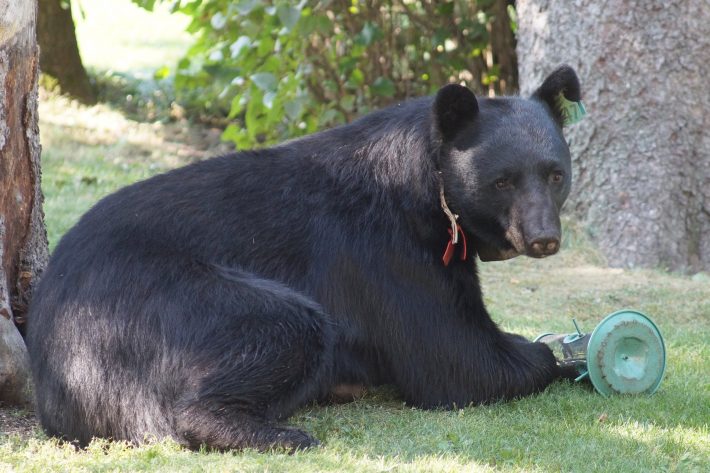Tracking Minnesota black bear range expansion
The American black bear is an incredibly adaptive species that is expanding its range in many parts of North America, including many areas alongside people. In Minnesota, USA, the Minnesota Department of Natural Resources asked citizens to report any bear sightings that occurred in parts of the state where bears typically do not live.

The website received thousands of bear sightings, but these observations have an inherent problem that prevents scientists from properly making use of the data to understand where there are more bears, and what factors (e.g., roads, natural cover) influence where bears are expanding; bear sightings can only occur where people encounter them, thus biasing the observations towards where humans are present on the landscape.
Without accounting for this inherent problem in the data, we could not make accurate predictions of bear abundance in areas where humans do not live, but bears might. We tested several factors that could account for where people are more likely to see a bear (e.g., housing density), but found that satellite data from NASA did the best job. The satellite-collected artificial light data, provided as monthly radiance averages, tracks nighttime lighting on Earth and removes natural light sources, such as the moon, resulting in the contributions related to human activities. This allowed us to capture changes in human activities through time (e.g., summer resorts) and near real-time changes in land use (e.g., new housing developments).
Not only did lighting track the human footprint best, but citizen scientists reported that nearly one in five bear sightings were directly aided by artificial lighting. Accounting for the human observer issue improved our understanding of the ecological factors associated with bear range expansion and resulted in more accurate predictions of bear range expansion. Bears expanded their range in areas with more natural cover, in closer proximity to their primary range and in areas with low road density. Without successfully accounting for where humans can see bears, we would have incorrectly predicted more bears living around highly illuminated metropolitan areas, where many citizen scientists live, and we received the most reported bear sightings.
Links
To find out more check out the project website.
Publications
, , , , . Artificial night light helps account for observer bias in citizen science monitoring of an expanding large mammal population. J. Anim. Ecol. 2020; 00: 1– 13.
Like what we stand for?
Support our mission and help develop the next generation of ecologists by donating to the British Ecological Society.